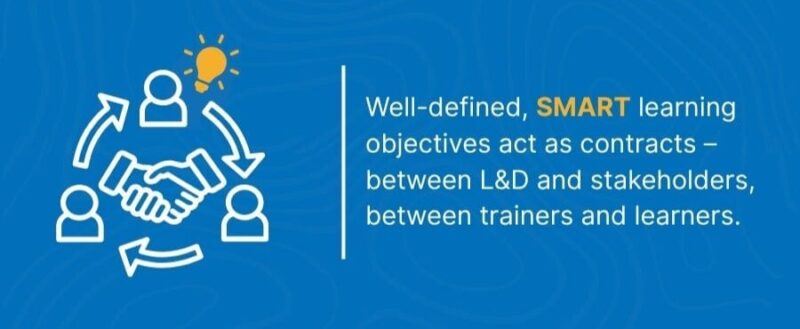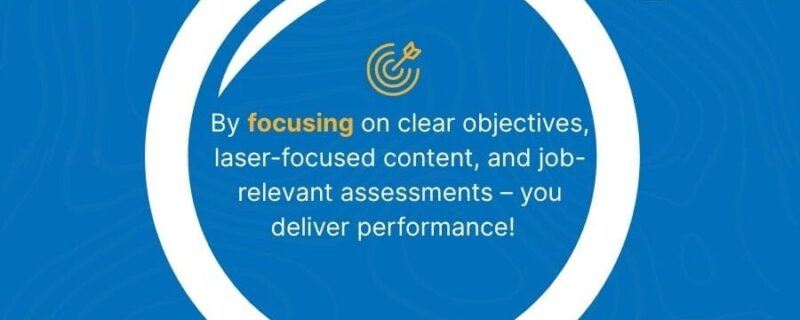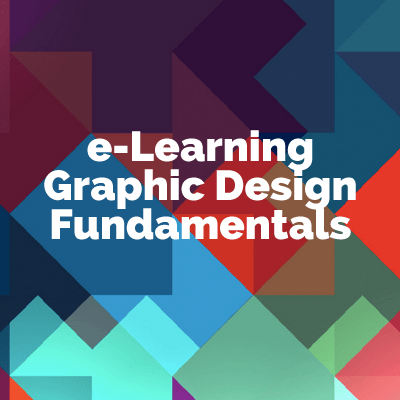Training Success Hinges On The Golden Triangle Of Instructional Design
Corporate training success doesn't depend on flashy visuals or expensive LMS platforms. It hinges on alignment: do your learning objectives, content, and assessments work in concert? When they do, you get streamlined training experiences that translate to real-world competence.
These three elements must reinforce one another:
- Learning objectives define what success looks like.
- Content enables learners to get there.
- Assessments prove they've arrived.

Image by CommLab India
Imagine building a bridge where each pillar leans in a different direction. Without shared focus and direction, collapse is inevitable. The Golden Triangle of Instructional Design ensures the bridge, your training program, is strong, balanced, and leads somewhere meaningful.
This approach doesn't just improve learner satisfaction or test scores. It drives business metrics: reduced error rates, faster onboarding, improved compliance. If your training hasn't led to a change you can measure, the triangle is probably broken.
High-Impact Frameworks: Backward Design And Constructive Alignment
One of the most effective ways to apply the Golden Triangle is through backward design. This method, championed by educators such as Wiggins and McTighe, flips traditional course planning. Instead of starting with content, you begin with the end in mind: What should learners be able to do after this training? [1]
Once you've defined the desired performance outcomes, the next steps are:
- Selecting or designing assessments that measure those outcomes.
- Building instructional content that enables learners to achieve them.
Similarly, the principle of constructive alignment (Biggs, Carnegie Mellon) emphasizes coherence between learning outcomes, teaching methods, and assessment tasks. When aligned, learners are better positioned to internalize and apply what they've learned.
This also means being selective about teaching strategies: lectures might suffice for knowledge transfer, but simulations and projects are essential for skills transfer. Matching method to outcome is what separates checkbox training from behavior-shifting training.
Anatomy Of Learning Objectives: SMART And Condition/Criteria
Well-crafted learning objectives are the foundation of effective training, and therefore the foundation of the Golden Triangle of Instructional Design. CommLab India recommends combining the SMART framework with performance-based learning objectives that include Robert Mager's Condition, Performance, and Criteria.
- Specific: Avoid vague verbs like "understand" or "learn."
- Measurable: Tie objectives to observable behaviors.
- Achievable and Relevant: Match learner roles and business needs.
- Time-bound: Set reasonable expectations for mastery.
Example
"Given the product spec sheet, the learner will accurately identify all 15 compliance gaps within 10 minutes, with at least 90% accuracy."
This format provides clarity, sets expectations, and directly informs both the content and assessment.
Beyond grammar, great objectives act as contracts between L&D and stakeholders, between trainers and learners. They provide a clear scope, which reduces ambiguity during stakeholder reviews and gives learners confidence that what they're learning is purposeful.

Image by CommLab India
From Objectives To Content: Curating What Truly Matters
Here's where many courses go off the rails: content overload. SMEs tend to treat training as a knowledge dump. But more content doesn't equal more learning.
UEN Pressbooks aptly likens content to a vehicle; it's the transport mechanism, not the destination. Every piece of content must be filtered through one essential question: Does this directly help the learner achieve the objective?
Strategies to keep content lean and purposeful:
- Prioritize need-to-know over nice-to-know.
- Use real-world examples instead of theory dumps.
- Incorporate job aids and reference materials for supplementary details.
- Create microlearning nuggets around critical tasks.
- Structure content into performance-based learning journeys.
And don't forget the power of multimedia. Videos, interactive modules, and infographics can enhance retention if used strategically. But they should be used to enable action, not just to decorate.
Designing Assessments That Mirror Work
If your assessment only checks what learners remember, you're missing the point. Assessments must reflect what learners are expected to do.
Research from U-M Teaching emphasizes the value of authentic assessments—tasks that simulate real-world performance. [2] Rather than asking multiple-choice trivia, design assessments that:
- Use simulations or role-plays.
- Present real-life scenarios requiring decision making.
- Include branching logic to reflect consequences.
- Allow learners to create work products that can be evaluated.
Tip: Use Bloom's taxonomy to match assessments with objectives. For example:
- Objective: "Apply the new process flow."
- Assessment: Case-based activity requiring learners to apply the process in a simulated project.
Adding formative assessments (e.g., short checks for understanding, interactive reflections) ensures learners stay on course before the final test.
You can also integrate learner-driven assessments: self-evaluations, peer reviews, and reflection journals. These promote accountability and deeper understanding.
Common Pitfalls And How To Fix Them
| Pitfall | Fix |
| Vague objectives | Use SMART framework and condition/criteria |
| Content creep | Audit every slide/module for alignment with objectives |
| Misaligned assessments | Use verbs from objectives to design performance-based assessments |
| Checklist training | Apply backward design to tie content to behavior and business goals |
| One-size-fits-all approach | Customize based on learner roles, regions, and tech maturity |
| Stakeholder interference | Ground decisions in business goals and design principles |
| No iteration after rollout | Use data to iterate—look at usage, feedback, assessment outcomes |
Many well-intentioned programs fail because they're built around content, not around change. Avoid that trap.
See the complete training alignment checklist here.
Final Call: Turn Training Into Transformation
Training is an investment. But only aligned training delivers returns. When you start with what matters—clear objectives, laser-focused content, and job-relevant assessments—you don't just deliver learning. You deliver performance.

Image by CommLab India
At CommLab India, we live by this alignment. Our Instructional Designers are trained to build courses that are lean, focused, and results-oriented. We don't believe in training for training's sake. We believe in training that counts.
We invite you to audit your training programs against the Golden Triangle of Instructional Design. It might feel tedious, but the clarity, learner engagement, and performance impact you unlock are worth it.
Want to ensure your training delivers real-world outcomes? Book a course audit with our learning strategists. Let's turn your training into transformation, one aligned course at a time.
References:
[1] Backward Design
[2] Creating Authentic Assessments
Read More:
- The Inseparable Trio: Learning Objectives, Training Content, and Assessments
- 3 Effective Formats for Performance-based Assessments: What's Your Pick?








